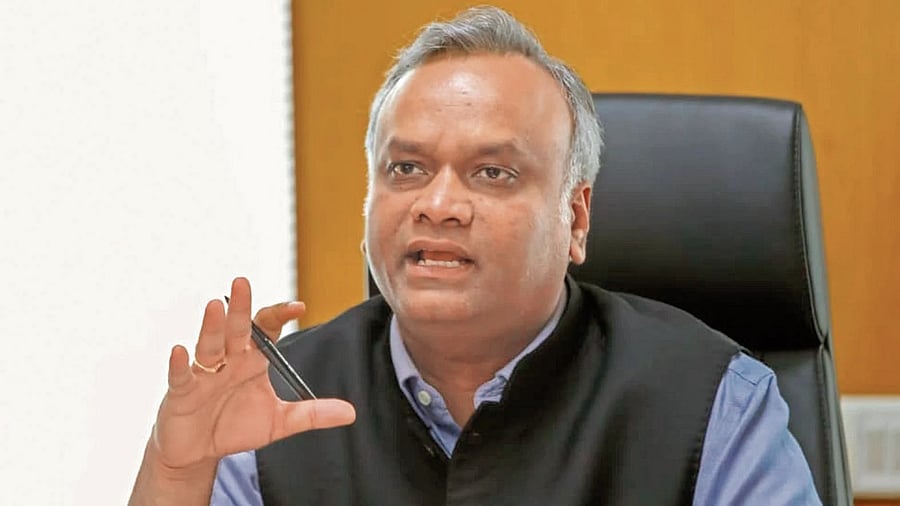
Karnataka Minister of Rural Development and Panchayat Raj Priyank Kharge.
Credit: DH Photo
In conversation with DH’s Pavan Kumar H, Karnataka Rural Development and Panchayat Raj Minister Priyank Kharge stresses the need for coordinated efforts across departments, diversification of works and simplified technology use to ensure effective implementation of Mahatma Gandhi National Rural Employment Guarantee Scheme (MGNREGS). Excerpts:
The MGNREGS has completed 20 years of implementation. How do you view its journey so far?
There is ample evidence that MGNREGS has benefited hundreds of rural families over the years. In Karnataka, it has played a significant role in preventing distress migration. While there were initial loopholes and instances of corruption, we have since addressed these issues and strengthened the system.
Last year, Karnataka generated nearly three crore person-days of work for 47 lakh beneficiaries and took up 16.7 lakh works. Without MGNREGS, many of these families would have been forced to migrate. The scheme has also helped create valuable assets in villages. In many ways, it has deepened decentralised governance, as the demand for work now comes directly from villagers and panchayats.
However, it is unfortunate that the union government led by Prime Minister Narendra Modi continues to view the scheme through a political lens. What can we expect from a prime minister who once termed it a “monumental disaster” and an example of the UPA government’s failure? The reality is that the current government is itself benefiting from MGNREGS as it continues to provide crucial employment in rural areas. Had adequate jobs been created in both urban and rural areas, the reliance on MGNREGS would naturally have reduced.
A majority of beneficiaries and activists blame complex technology for the poor response to MGNREGS. How do you view this?
Technology is not a hindrance; in fact, it has improved accountability and transparency. Introduction of geo-fencing and National Mobile Monitoring System has helped minimise corruption. In some parts of Karnataka, beneficiaries do face difficulties in logging in. Technology has not completely eliminated corruption as issues like double attendance still persist. The central government has introduced certain conditions and mandates that have created hardship for beneficiaries. Karnataka is working to streamline these processes, improve the quality of work and simplify the use of technology.
Why are many departments not providing jobs under MGNREGS despite provisions allowing them to do so?
One of the core objectives of MGNREGS is to create community and individual assets in villages but many departments are not converging their efforts. Many of the departments do not have separate fund allocation to take up the work under the scheme. For example, if a PHC needs to be built in a village, the health department is not utilising MGNREGS for it. Also, the central government has imposed some restrictions on the types of work that a department can take up.
In Karnataka, we are looking at diversifying MGNREGS works to cover solid waste management, grey water treatment etc. However, getting central approval for this is challenging.